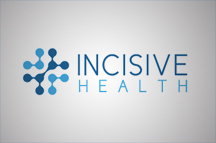Too hot for Twitter? Here are some of our highlights from the last week to help you chill out.
-
![Source: NHS Atlas of Risk [http://www.nhs.uk/Tools/Pages/NHSAtlasofrisk.aspx]](/uploads/images/deathchart.png) Risks leading to death in perspective – you are more likely to be murdered than die in pregnancy or birth.
Risks leading to death in perspective – you are more likely to be murdered than die in pregnancy or birth. - Who says the financial squeeze and quality are unrelated? NHS England will only break even because CCGs won’t hit their quality targets.
- The slowdown in health expenditure is a global phenomenon.
- “Ringfence – composed mainly of loopholes.” For classic NHS definitions look at #NHSlexicon.
- “It's almost like finding a vaccine that works very well against lung cancer." The case for plain packs in Australia.
- The best case for higher taxes is that there isn’t a viable case for keeping them down, whatever politicians say this side of the General Election. Andy Cowper on fine form in this blog.
- Interesting blog by Richard Cookson, reflecting on a recent appearance on BBC Radio 4’s Moral Maze.
Some notable tweets from the reshuffle:
- Andrew Lansley is leaving the national stage, but his resignation letter suggests he wants a part on the international one. Governor General of Bermuda? His first speech at the Department of Health included some hints…
- Great live blogging from the Institute for Government on the reshuffle. The analysis of the impact on gender composition of the Government is particularly pertinent.
- A nice parting tweet from Nick Hurd to the voluntary sector.
And from America:
- The league table of top US cancer hospitals.
- Rewarding outcomes in cancer can reduce costs.
- The intersection of genomics, rare disease and social media.
And finally…
- Want to know if a plant can cure you? Check if its shaped like the organ you want to help…
Incisive Health is the new force in health policy and communications. In an NHS environment that is noisy, changing rapidly and where decision-makers are under intense pressure, policy communications need to be incisive to make an impact. We know how to cut through the noise and competing priorities to deliver results that enhance our clients' businesses and reputations and – ultimately – improve healthcare for patients.














